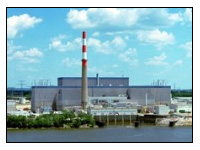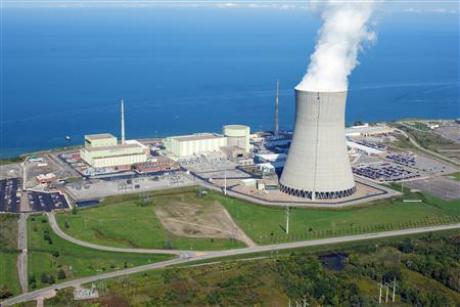By Stephen Heiser -
 An approximate 38-megawatt increase in output at an Exelon Nuclear plant last week launched a series of planned power uprates across the company’s nuclear fleet that will generate between 1,300 and 1,500 megawatts of additional generation capacity within eight years without turning a spade of earth, Exelon Nuclear President and Chief Nuclear Officer Charles (Chip) Pardee said today.
An approximate 38-megawatt increase in output at an Exelon Nuclear plant last week launched a series of planned power uprates across the company’s nuclear fleet that will generate between 1,300 and 1,500 megawatts of additional generation capacity within eight years without turning a spade of earth, Exelon Nuclear President and Chief Nuclear Officer Charles (Chip) Pardee said today.
The first of the new, carbon-free nuclear megawatts was officially confirmed last week following equipment upgrades at Exelon’s Quad Cities nuclear plant near Cordova, Ill. Other uprate projects are underway and Exelon plans to have the full measure of new megawatts on the grid by 2017.
“With these uprates, we will be able to produce the equivalent output of a new advanced nuclear reactor, and we’ll bring it to market in a timeframe commensurate with the fastest new construction,†Pardee said. “These uprates are a critical component of Exelon 2020, the company’s plan to eliminate the equivalent of its 2001 carbon footprint by 2020.â€
Uprate projects improve the efficiency and increase electricity output of a nuclear generating unit through upgrades to plant equipment. The projects take advantage of new production and measurement technologies, new materials and learning from a half-century of nuclear power operations.
The remainder of uprate megawatts will come from additional projects at nine Exelon plants beginning in 2010 and ending in 2017.
At 1,500 nuclear-generated megawatts, the uprates would displace 8 million metric tons of carbon emissions annually that would otherwise come from burning fossil fuels.
Exelon operates the largest fleet of commercial nuclear reactors in the United States and the third largest in the world. A series of plant upgrades and uprates over the past 10 years have already added approximately 1,100 new megawatts to Exelon Nuclear’s generation.


 An approximate 38-megawatt increase in output at an Exelon Nuclear plant last week launched a series of planned power uprates across the company’s nuclear fleet that will generate between 1,300 and 1,500 megawatts of additional generation capacity within eight years without turning a spade of earth, Exelon Nuclear President and Chief Nuclear Officer Charles (Chip) Pardee said today.
An approximate 38-megawatt increase in output at an Exelon Nuclear plant last week launched a series of planned power uprates across the company’s nuclear fleet that will generate between 1,300 and 1,500 megawatts of additional generation capacity within eight years without turning a spade of earth, Exelon Nuclear President and Chief Nuclear Officer Charles (Chip) Pardee said today.
 Dr. John D. Johnson has a background in nuclear, experimental & accelerator physics. He worked for Los Alamos National Laboratory in the 1990s and founded Docent Institute to raise awareness about the ethical use of advanced technology.
Dr. John D. Johnson has a background in nuclear, experimental & accelerator physics. He worked for Los Alamos National Laboratory in the 1990s and founded Docent Institute to raise awareness about the ethical use of advanced technology.